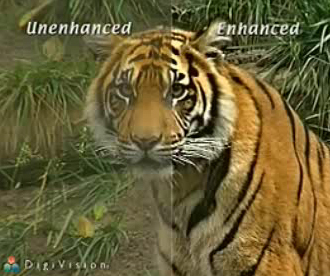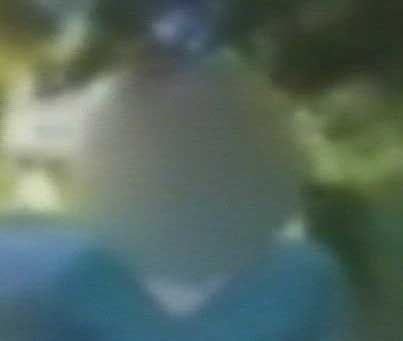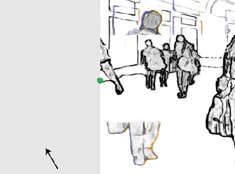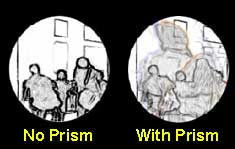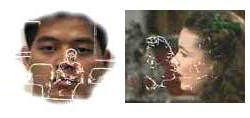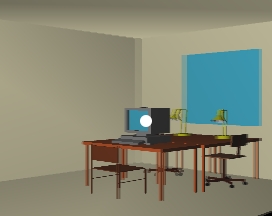Where people look when watching movies
Magnification around the most important point of a movie scene (center of interest - COI) might aid people with visual impairments that cause resolution loss. This will be effective only if most people look at the same place when watching a movie. We recorded the eye movements of 20 normally-sighted subjects as each watched 6 movie clips. Here are excerpts from clips illustrating different levels of movement and the varied responses.
More information - for more information about the scanpath work and the sample movies, click here.
Image Enhancement
Example of Television Image Enhancement performed by the DigiVision RazorVision device implementing the Adaptive Enhancement algorithm (Peli and Peli, 1984). The left side of the split screen is the original image, the enhanced image is presented on the right.
Note: MPEG compression degrades the quality of both images, especially for the smaller file size.
MPEG Image Enhancement - for demonstrations of our MPEG enhancement, click here.
[More Information]
Central Field Loss (CFL), the loss of central vision, is usually caused by Macular Degeneration. CFL patients can have difficulties with reading, face recognition, driving, and mobility.
This simulation was taken from the video "Hope In Sight", which we developed using software provided by Wilson S. Geisler, Ph.D. of the University of Texas, Austin and was produced by the New England Research Institutes, Watertown, MA. In 2003, "Hope In Sight" won a Telly Award.
Article:
Geisler WS, Perry JS. Real-time simulation of arbitrary visual fields. [PDF 860 KB]
Homonymous hemianopia, the loss of vision in about half the visual field (i.e. on one side and in both eyes), can occur due to stroke, head injury, or surgery to remove tumors. Hemianopic visual field loss causes a range of problems, the most common being mobility and navigation. Patients with hemianopia frequently... [More Information]
Peripheral visual field loss (tunnel vision) is a severe constriction of the visual field leaving only the central 5-10 deg. of the field functional. This condition may occur in diseases such as Retinitis Pigmentosa or... [More Information]

